Soon after leaving the village of Phia Thap, we made a short break to visit some blacksmiths. There, beside the road, a few people have their blacksmith workshops and they make tools they are famous for. I thought of buying a good kitchen knife, but first I didn’t feel like carrying a piece of iron in my backpack for the next three weeks or so and second, although it would certainly go into the checked baggage, I was worried because of the airport security. Later I regretted not buying a nice small cleaver, for they really seemed great, but what can I do now. Maybe, some other time...
What was particularly interesting was a workshop in which a husband and a wife worked together, while she also had a small child tied to her back and as her body moved to and fro while hitting with her hammer, so did the child without a single sound of complaint. That woman was particularly spirited, since she made jokes at her own expense saying that she eats a lot – “five bowls of rice” – as she needs a lot of strength to help her husband.
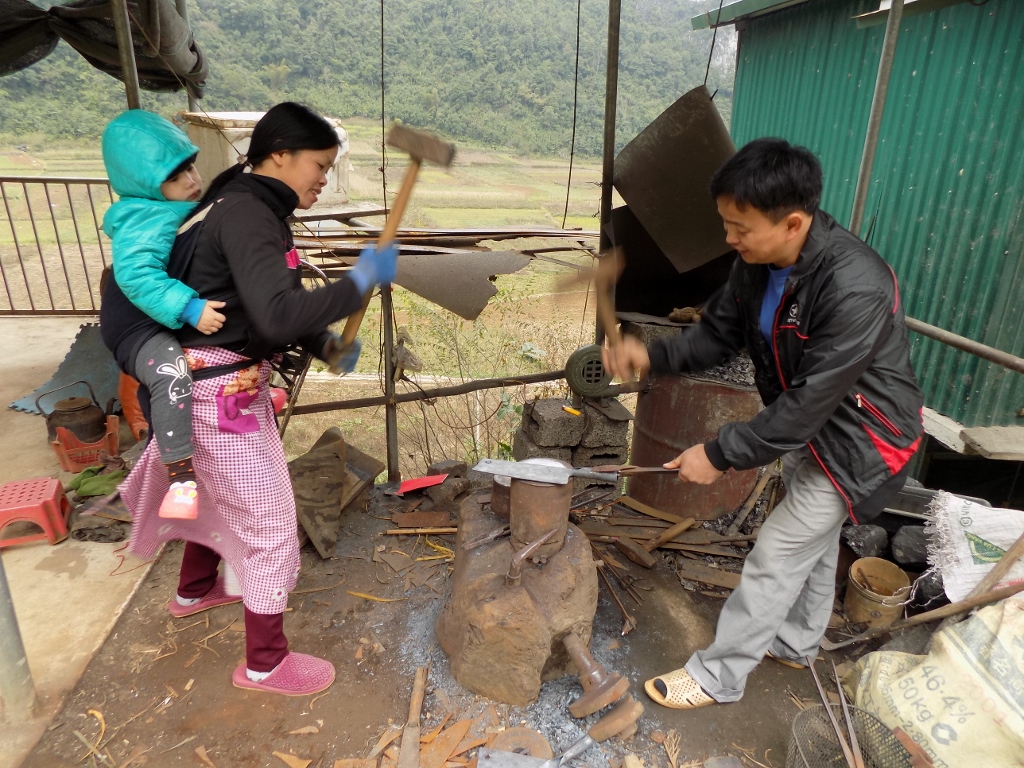 Family blacksmith workshop
Family blacksmith workshop
Then we first went to Nguom Ngao, which means Tiger’s Cave. It’s a 2 km long cave that was discovered at the beginning of the 20th century, but was opened for visitors in 1996. We all walked nicely there and it was particularly interesting that in a few places I could see some plants growing there thanks to the light installed in the cave.
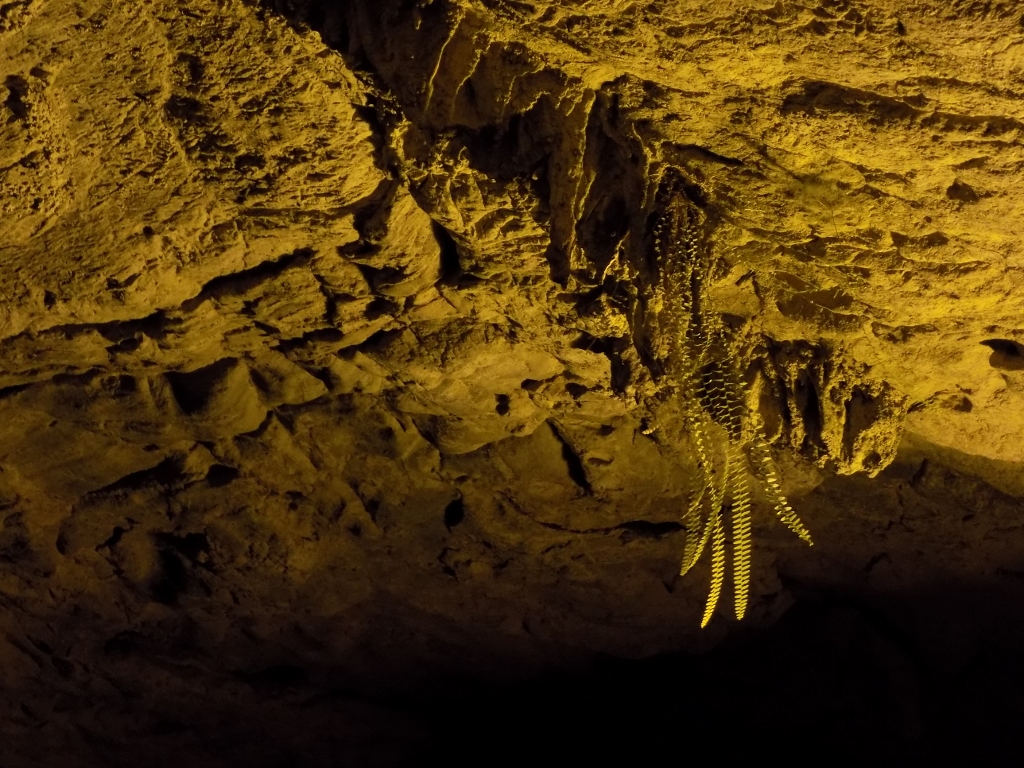 Nguom Ngao cave, a plant growing downwards from the ceiling of the cave
Nguom Ngao cave, a plant growing downwards from the ceiling of the cave
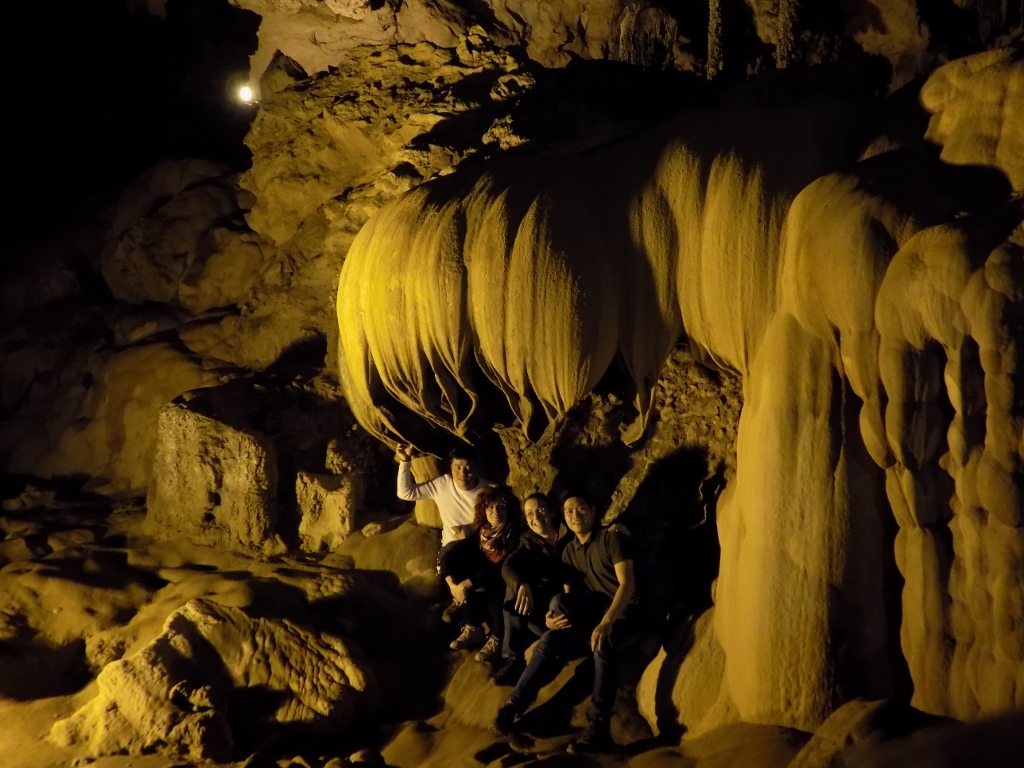 Nguom Ngao cave, the four of us under the naturally shaped rock “inverted lotus flower”
Nguom Ngao cave, the four of us under the naturally shaped rock “inverted lotus flower”
After our visit to the cave, we moved to the main destination and that was the Ban Gioc waterfalls situated on the very border between Vietnam and China. These are the largest waterfalls in Vietnam, not by their height (they are merely around 30 m high), but by the scope they cover which is around 300 metres. According to some criteria, they seem to be the fifth largest waterfalls in the world. They don’t appear like that, but they were certainly spectacular!
 Ban Gioc waterfalls
Ban Gioc waterfalls
First we walked along the shore of the river looking at the waterfalls, as well as China that is just across the river, because both the waterfalls and the river separate these two countries and both countries have vessels on which tourists can approach the waterfalls.
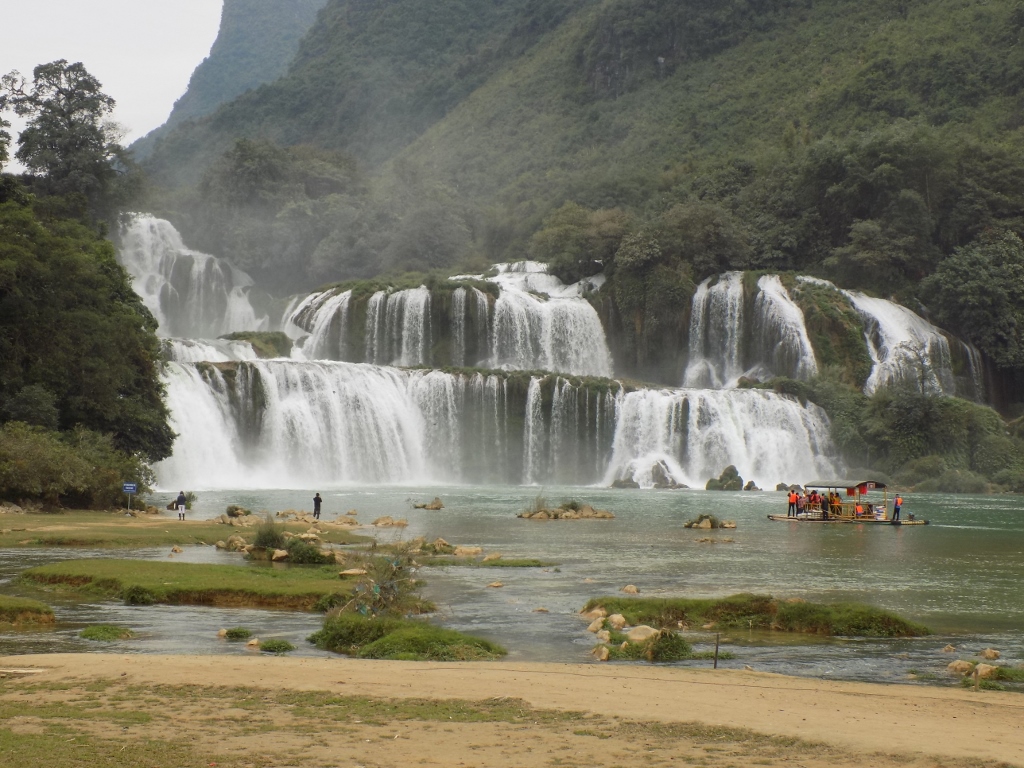 Ban Gioc waterfalls, the main course of the river
Ban Gioc waterfalls, the main course of the river
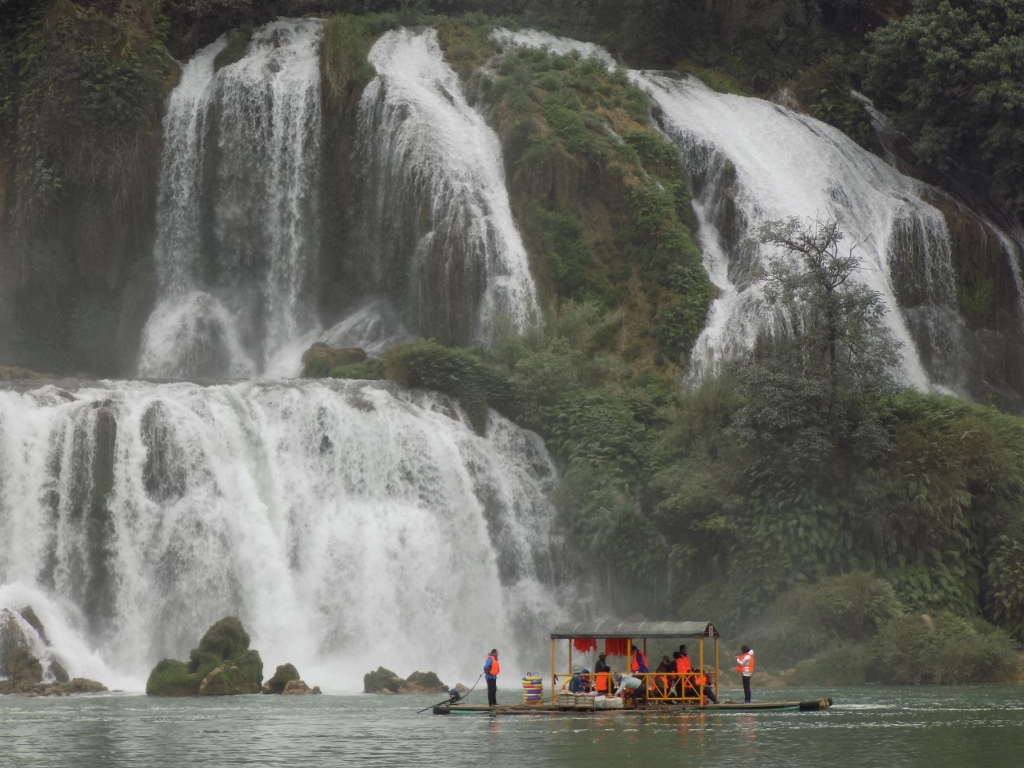 Ban Gioc waterfalls and a tourist raft
Ban Gioc waterfalls and a tourist raft
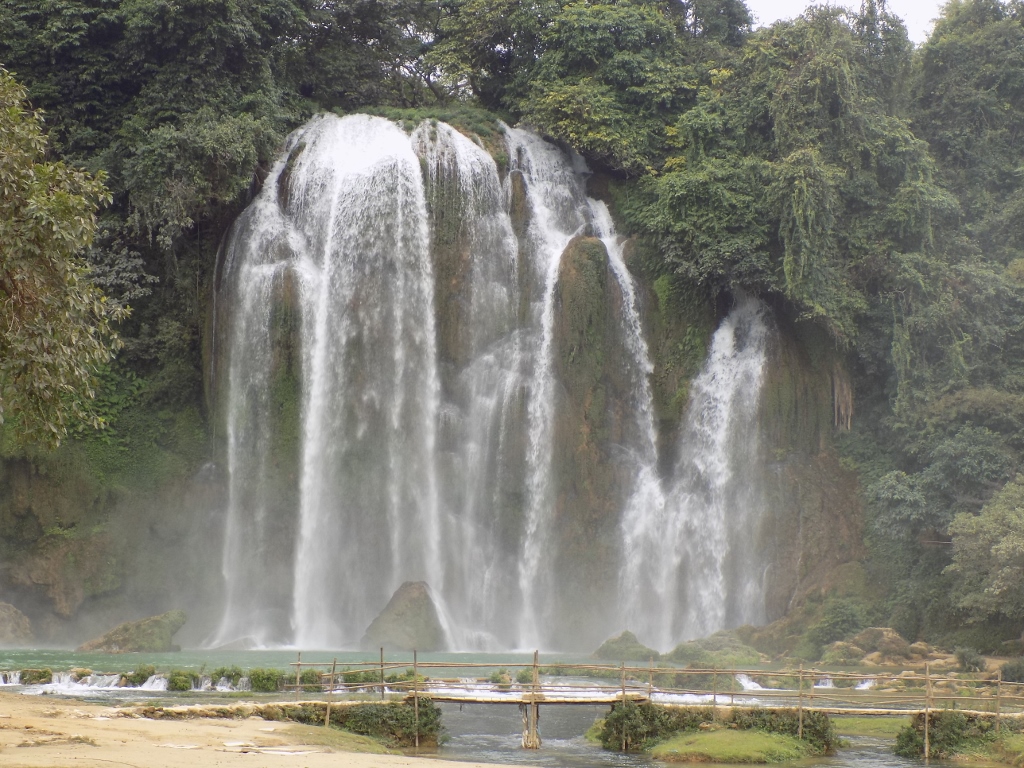 Ban Gioc waterfalls, one of the side courses of the river
Ban Gioc waterfalls, one of the side courses of the river
Then we embarked on a raft that took us very close to the waterfalls, as well as China! Each detail and point of view was great and we stayed there for a while.
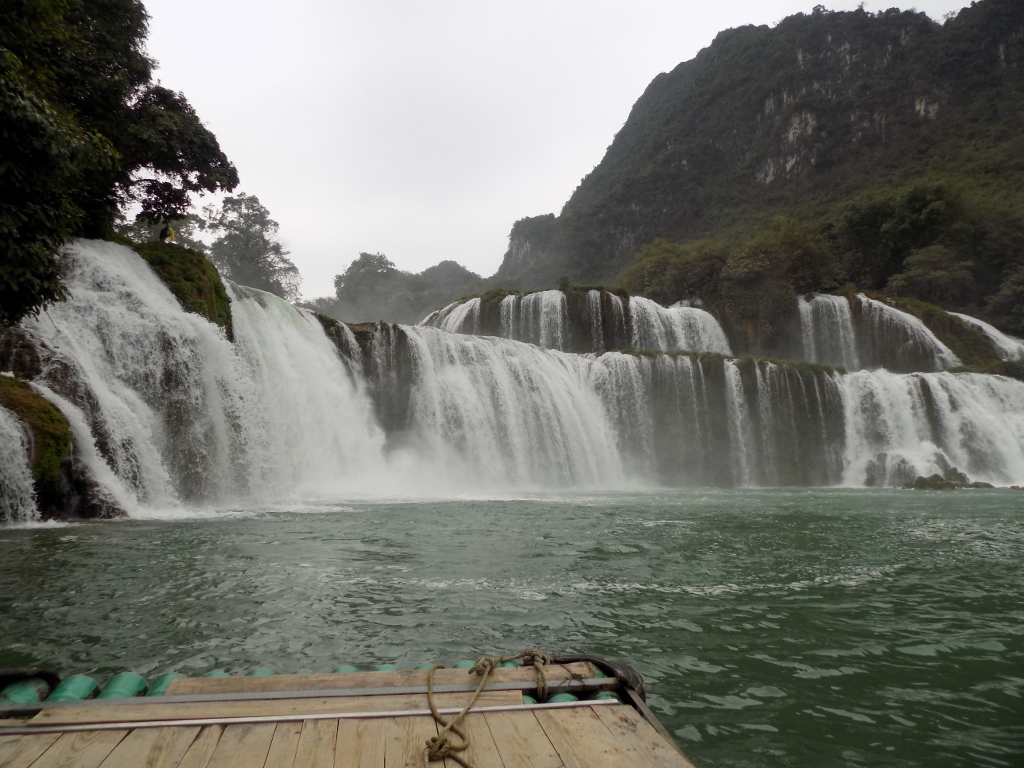 Ban Gioc waterfalls, visit by a tourist raft
Ban Gioc waterfalls, visit by a tourist raft
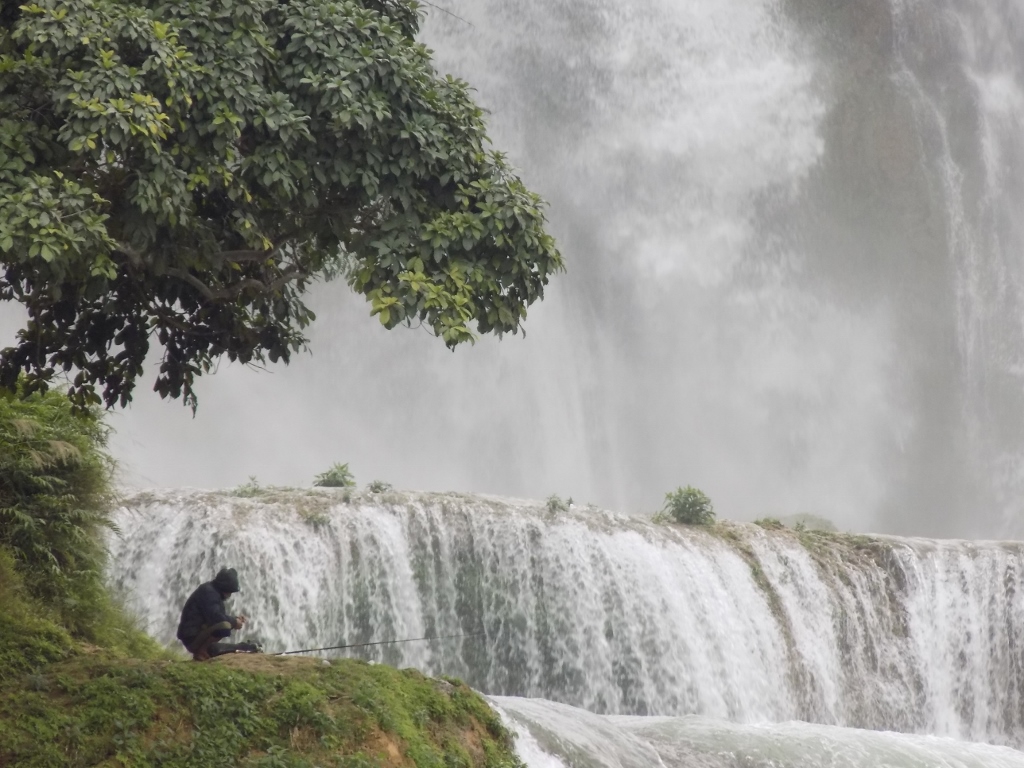 Ban Gioc waterfalls, it is possible to fish here
Ban Gioc waterfalls, it is possible to fish here
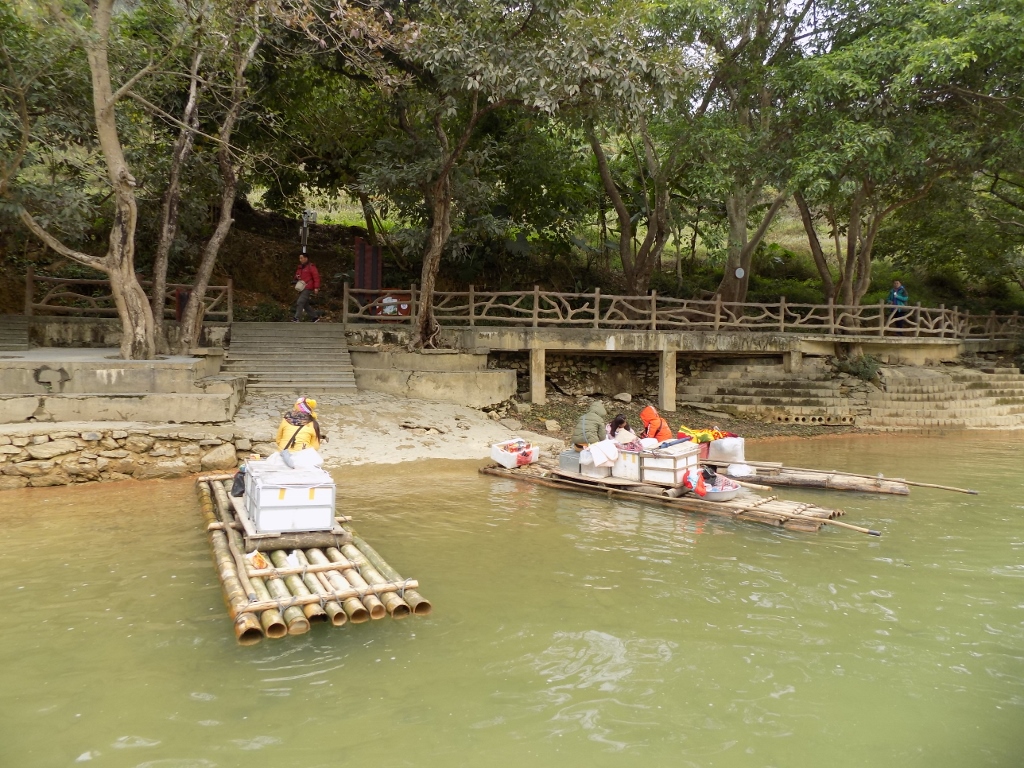 This is the shore that belongs to China
This is the shore that belongs to China
By the way, the local residents use bamboo rafts in order to go from one shore to the other, i.e., from one country to the other.
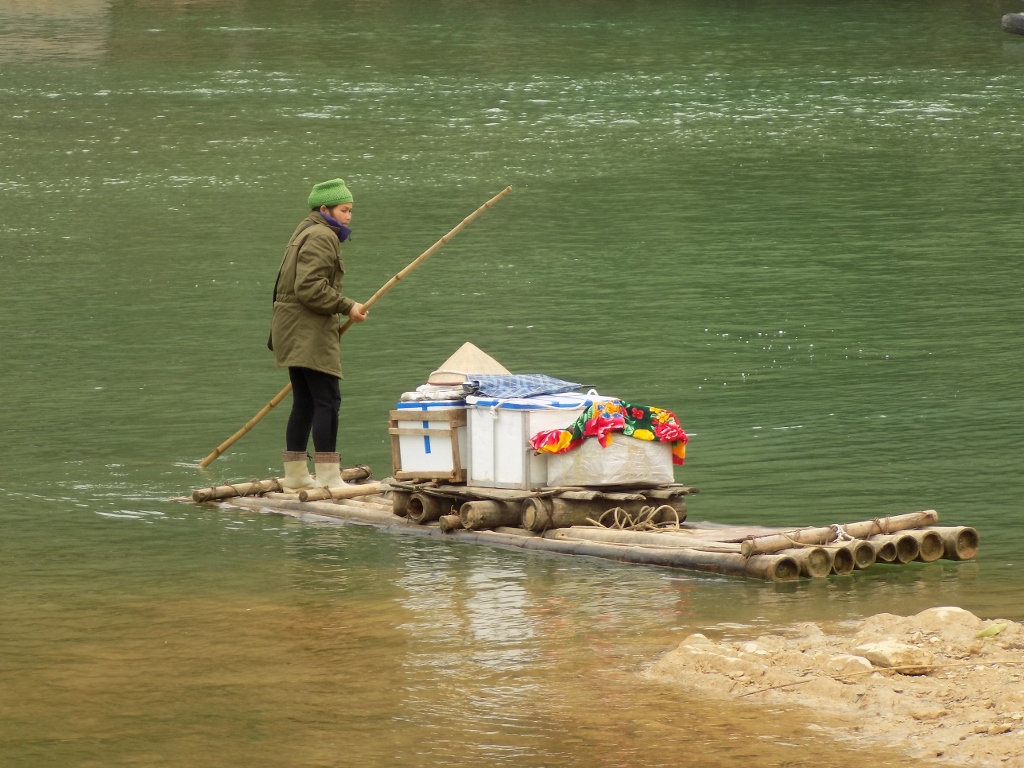 Local cargo transportation
Local cargo transportation
After a circle we made by the raft on the main course of the river, we walked a little to the side branches and the images were impressive everywhere. By the way, the waterfalls are created by the Quay Son River.
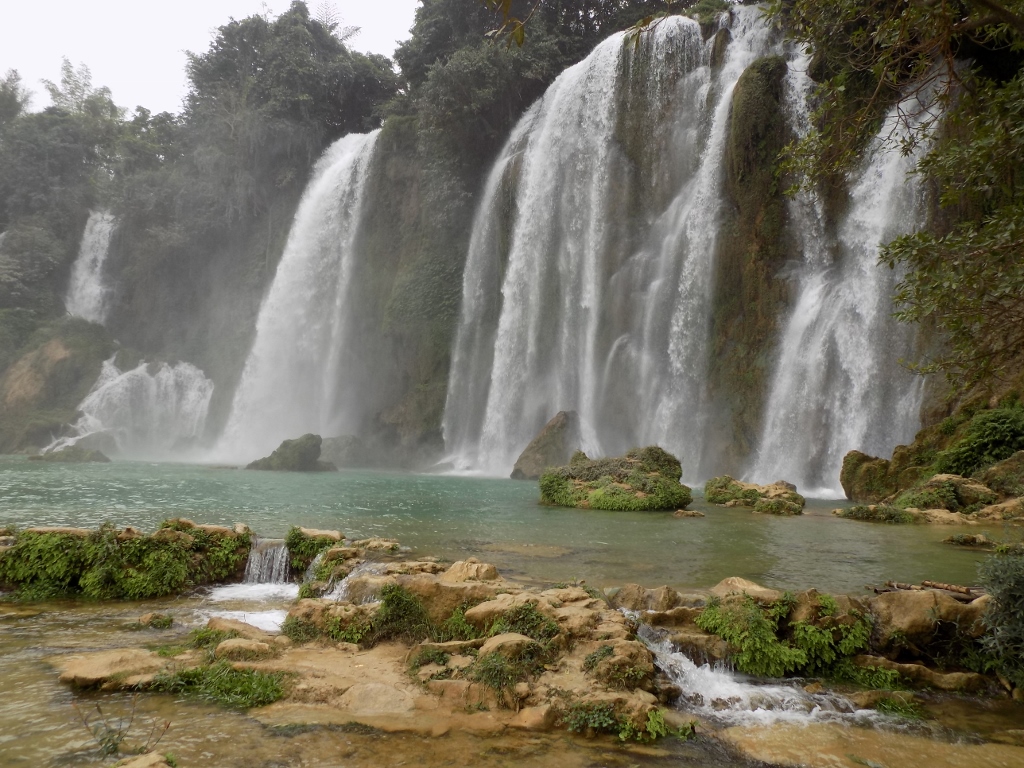 Side Ban Gioc waterfalls
Side Ban Gioc waterfalls
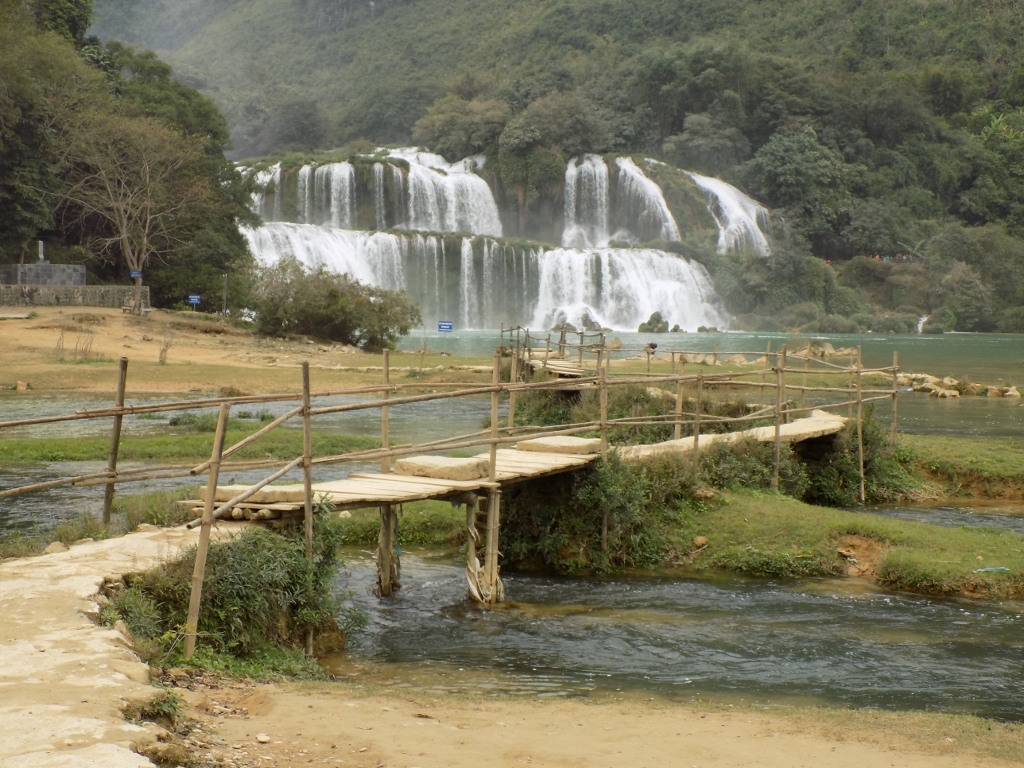 One more look at the Ban Gioc waterfalls
One more look at the Ban Gioc waterfalls
Then we went to a restaurant in the place called Quang Uyen and there I was paid a great compliment to my mind by one of the waitresses commenting aloud that I looked like a Vietnamese and even pointing out the “fact” to one other guest. (Actually, I asked Luan to check this, since I did not understand anything apart from the word “Viet” and pointing at me, but I presumed what it was about and just wanted to verify it). The food was great at this place and I really had a very nice meal. If you go to Vietnam and this general area (I don’t know if one particular dish is prepared elsewhere), make sure you order La mac mat cuon thit, in other words some leaves wrapped in pieces of pork and then deep fried. Exceptionally tasty, leaves including.
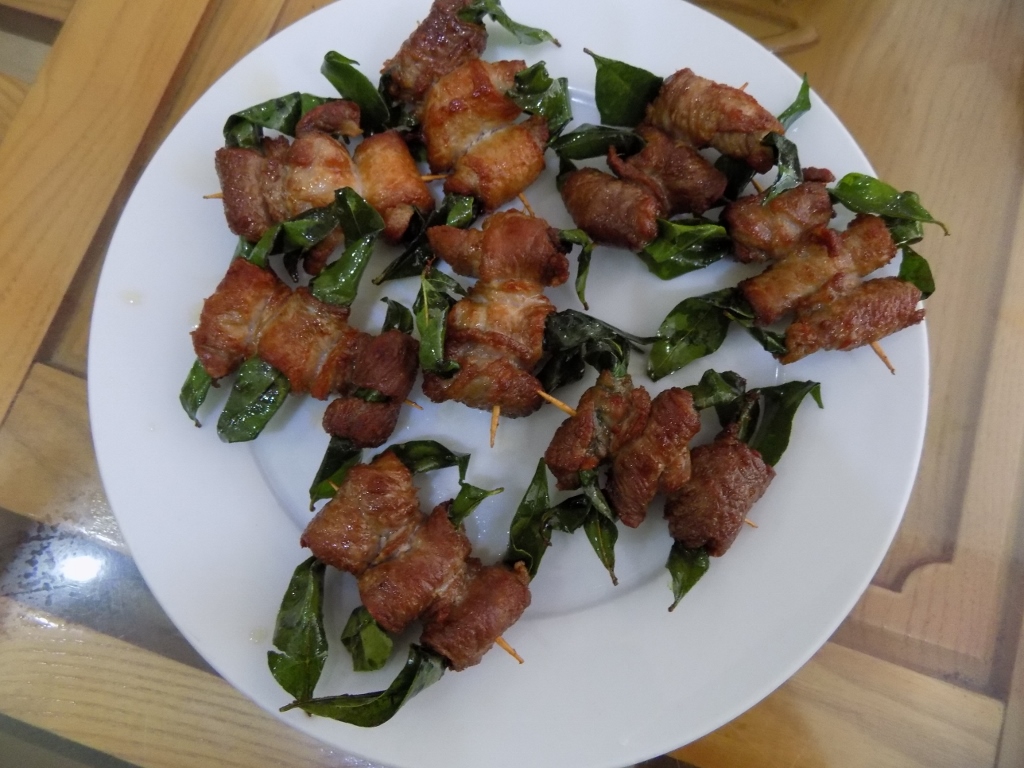 Fried pork with leaves – finger-licking good (or rather chopstick-licking good)
Fried pork with leaves – finger-licking good (or rather chopstick-licking good)
Somewhere along the way I realized that I actually very much liked the cap I had seen the grandson of our hosts in the village of Phia Thap wearing (see: https://www.svudapodji.com/en/vietnam-5/) and I wanted to buy one as a souvenir from this region. We stopped at a couple of places to see if I could buy something like this, but as it turned out such caps cannot be bought in shops, but rather members of the Nung people make them by hand for their own needs. I felt sorry that I could not find it, but then it occurred to Luan to ask the blacksmiths, since we were passing by their workshops anyway. So, we stopped at the one who had worked with his wife earlier that day and he said he might have a cap like that at home and his home was one kilometre way. So, he sat on his motorbike, left his workshop and all inside of it to us and went to fetch the cap. He eventually returned with two, one for a boy and another for a girl, and I bought both of them. At first glance, the patterns on the cap seemed printed, but then the blacksmith told Luan that each cap takes several days to be made. Then I looked at them more closely and saw it was a very fine work, and what I thought was a printed pattern was actually the most delicate embroidery I had ever seen. I was truly happy!
So we continued driving to the Ba Be National Park. This took a while, but it was not boring since we were passing through some beautiful mountainous landscapes. We reached the Ba Be National Park when it was already dark. The plan for that night was for us to sleep again in a homestay that was within the park and on the lake shore. But, in order to get there, the mini-bus first took us to a shore where, lit by flashlights, we transferred onto a boat and then headed across the lake surrounded by darkness. Here and there in the distance we saw some lights of the houses that are located around the lake, but everything else was pitch-black. Then the guy who was at the bow turned on the flashlight in order for the boat to proceed safely and I could see we were entering a narrow canal. The images and the dimmed colours of the lit sections were truly magical. Still to the left and right it was just dark. And then we saw some lights ahead of us and realized that the canal led to the house in which we would spend the night.
Although this is also considered to be a homestay, the place belongs to an agency specialized for the Ba Be National Park, so everything seemed a little better and more polished in comparison to the previous experiences. Everybody was absolutely kind, but I did miss the smiles and the cordiality of our hosts from the Nung people, not to mention their rice brandy.
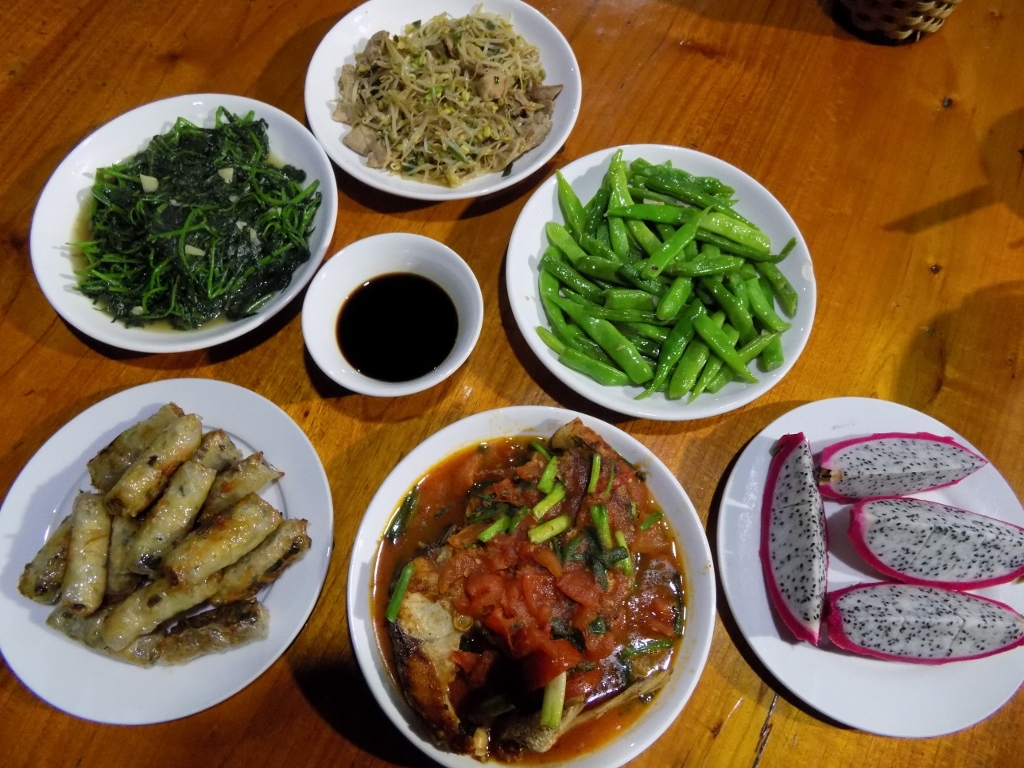 Dinner at the homestay in the Ba Be National Park
Dinner at the homestay in the Ba Be National Park
The next morning after breakfast, with no rush, we embarked on the boat with all of our things and first made a circle around one section of the lake and then took our luggage to the shore and transferred it into the mini-bus, after which we continued with our boat ride. By the way, Ba Be means three lakes and these are in fact three connected lakes. They are not big, the second one being actually a relatively narrow canal bringing together the first and the third lakes, but the nature around us was truly beautiful.
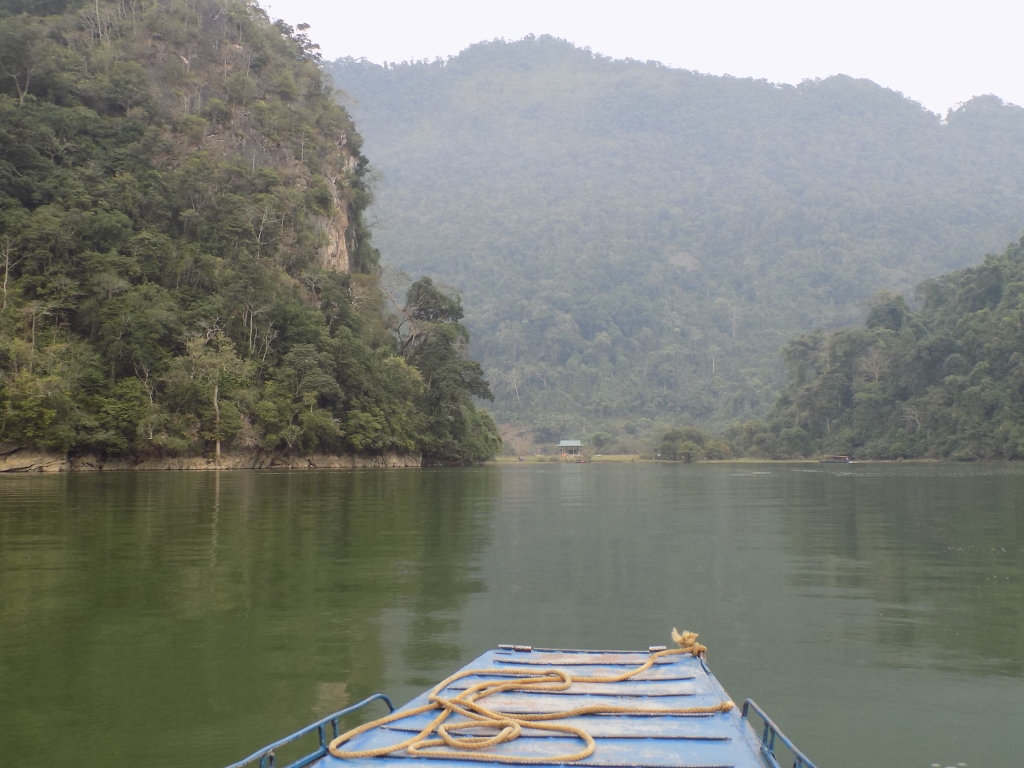 Sailing across the lakes in the Ba Be National Park
Sailing across the lakes in the Ba Be National Park
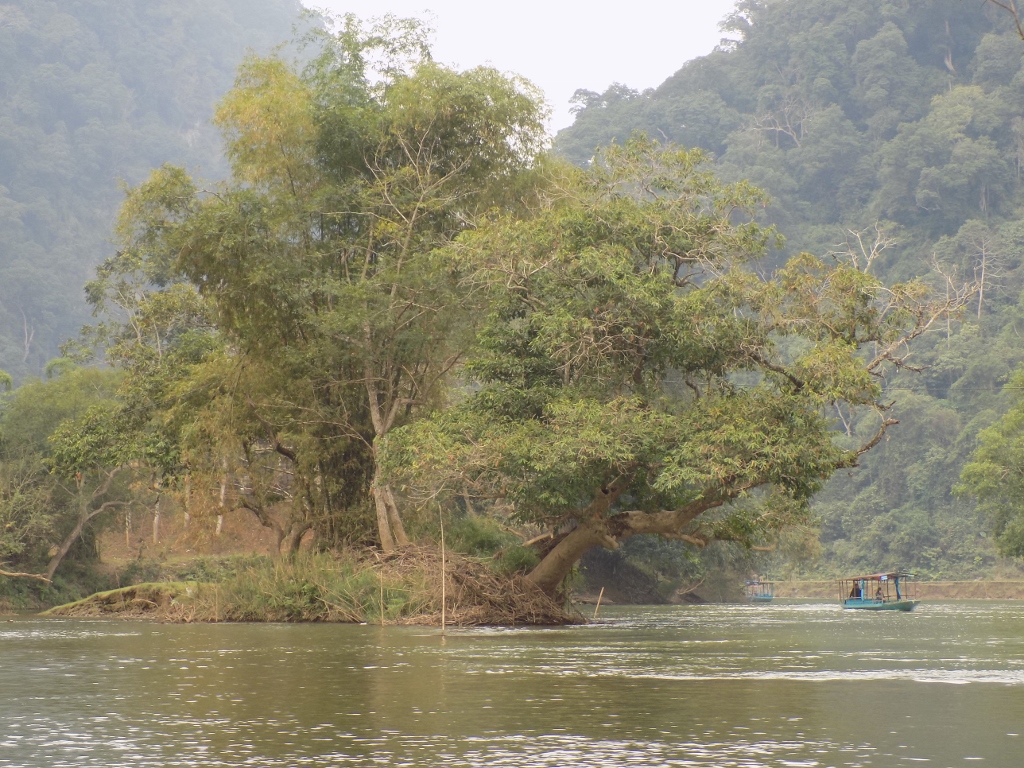 A detail from the Ba Be National Park
A detail from the Ba Be National Park
We sailed across all three lakes and then came to a place where water runs out of the lakes and soon joins the Song Nang river. There the boat parked and we went out in order to walk parallel to the river, next to some farms, while the boat went on to wait for us a little farther upstream.
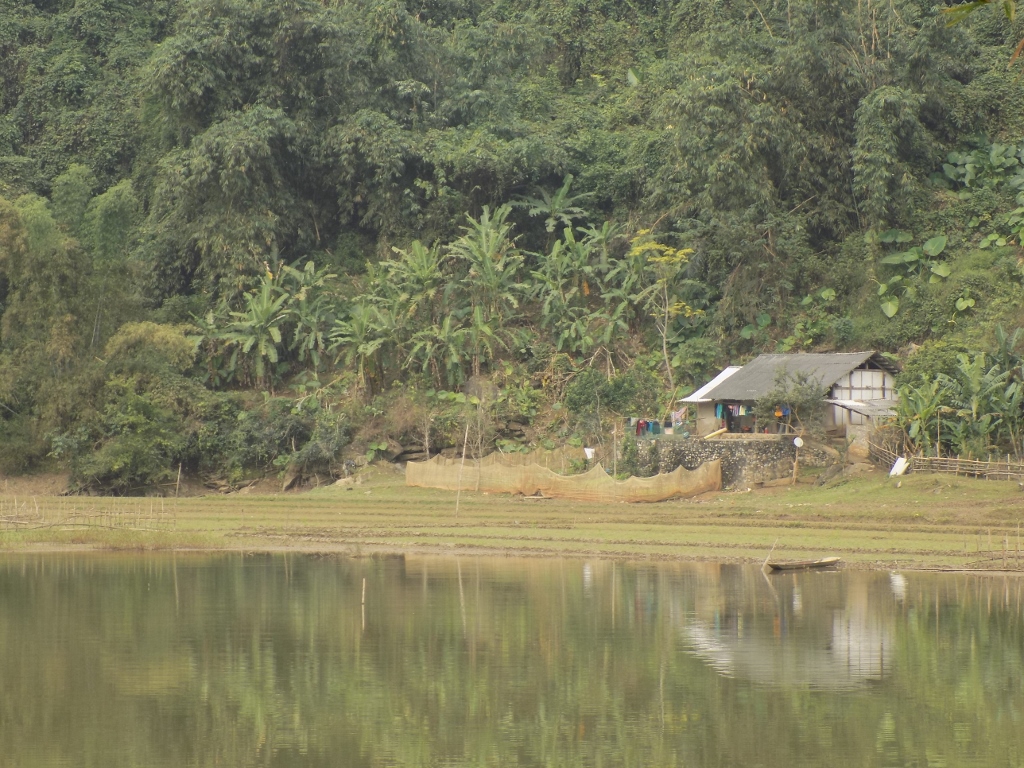 A farm near the Ba Be National Park
A farm near the Ba Be National Park
During this walk we often came across sows with tiny piglets and as this was a rather small breed and the piglets were still young and suckling, their chase after their mother who was looking for some food for herself was absolutely adorable. The fields we passed by were now mostly dried soil, but some were being ploughed by farmers, who were also starting to sow rice in some plots in order to get seedlings for later on, while green vegetables grew in some other plots. We also came across a dense net on which some fish were left out to dry.
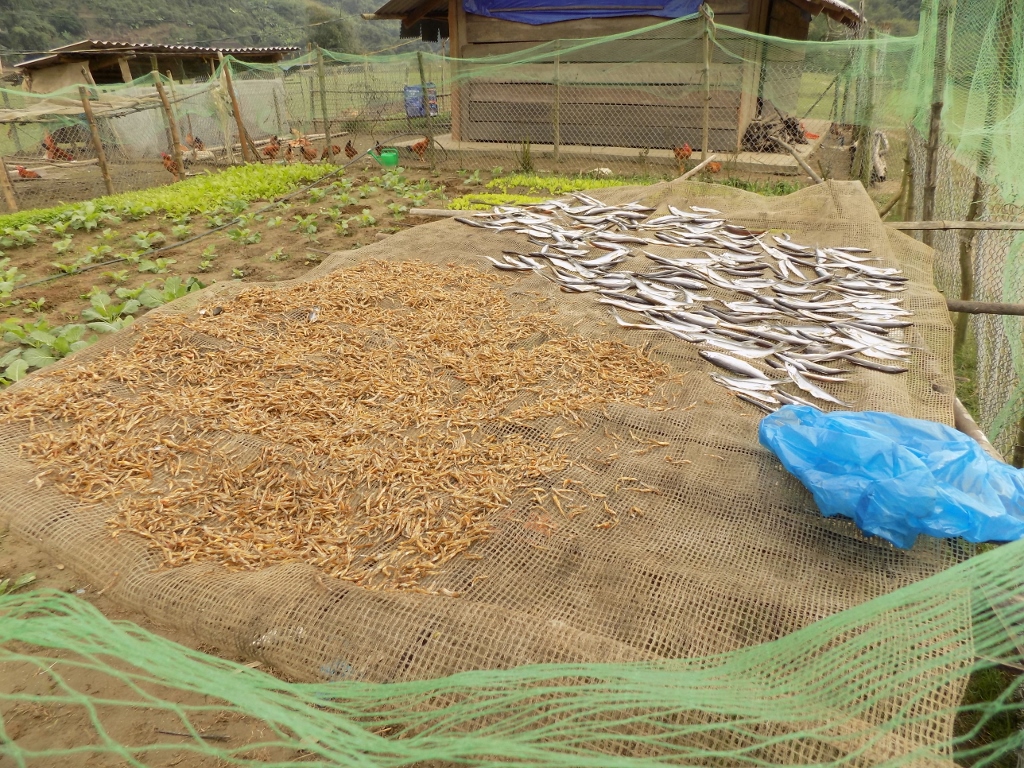 Drying fish
Drying fish
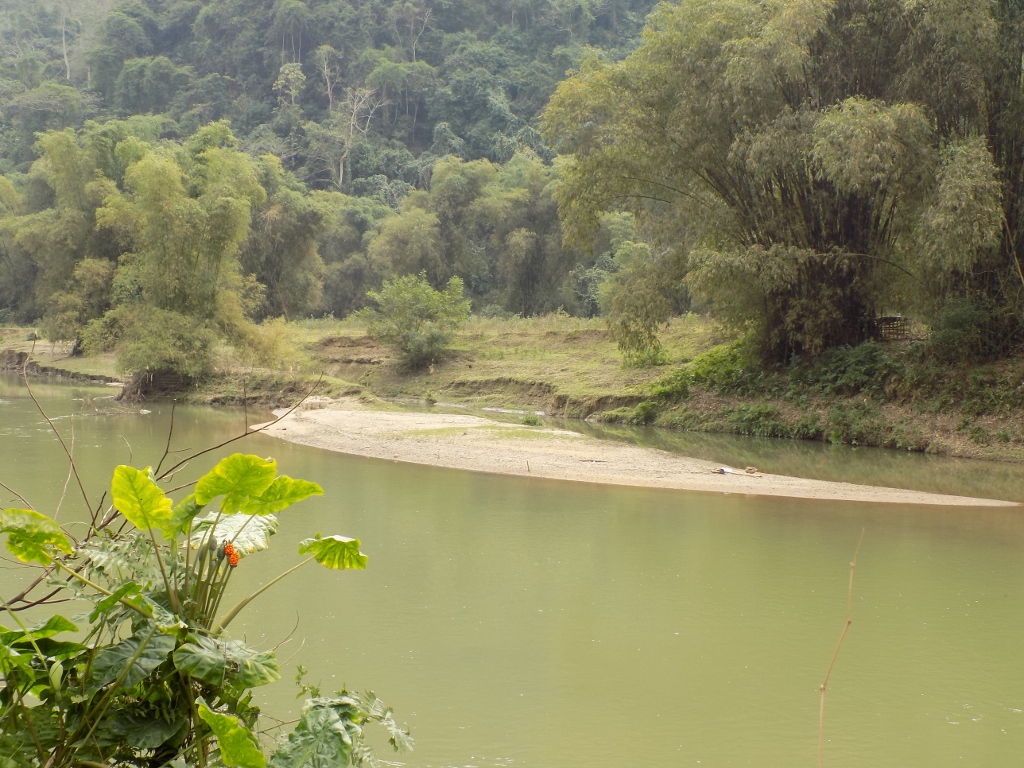 View at the Song Nang river
View at the Song Nang river
Soon we embarked on the boat again and moved on. By the way, the Ba Be National Park is in the UNESCO’s Tentative World Natural Heritage List not only because of the nature, mountains, numerous caves and waterfalls, but primarily because of the large number of forests, including primary ones (those that grow with no human interference), as well as because of the diverse flora and fauna with a large number of rare species. And all of this over a limestone base which appears to be omnipresent in most of Vietnam.
While continuing with the tranquil boat ride along the river, surrounded by greenery and limestone formations rising from the adjacent terrain, all of a sudden a cave started to appear in front of us. Or rather, this was a huge tunnel in one of those limestone formations through which the Song Nang river passes. The sight was spectacular.
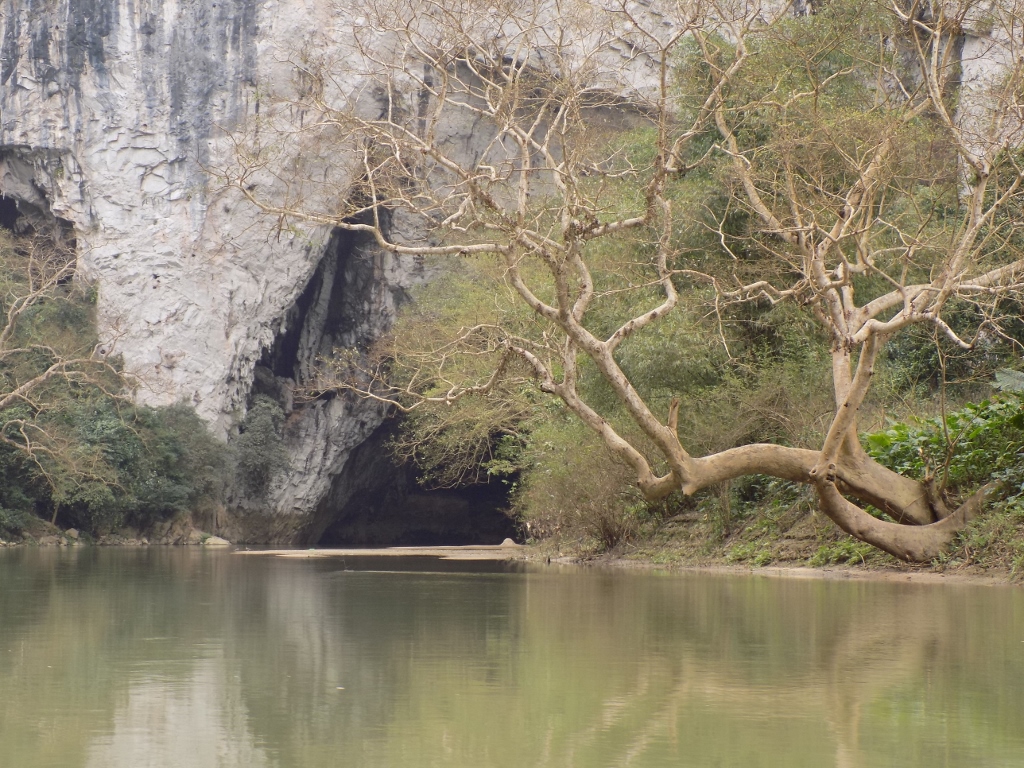 Coming across a natural tunnel through a mountain
Coming across a natural tunnel through a mountain
The boat took us to a staircase leading into the cave. The Đong Puong cave is well-known for the large number of bats that gather inside of it and since we were the only visitors at that point and we kept silent, all the time we could hear the sounds of numerous bats, although they could not be seen since they stay in dark and narrow crevices in the cave’s ceiling.
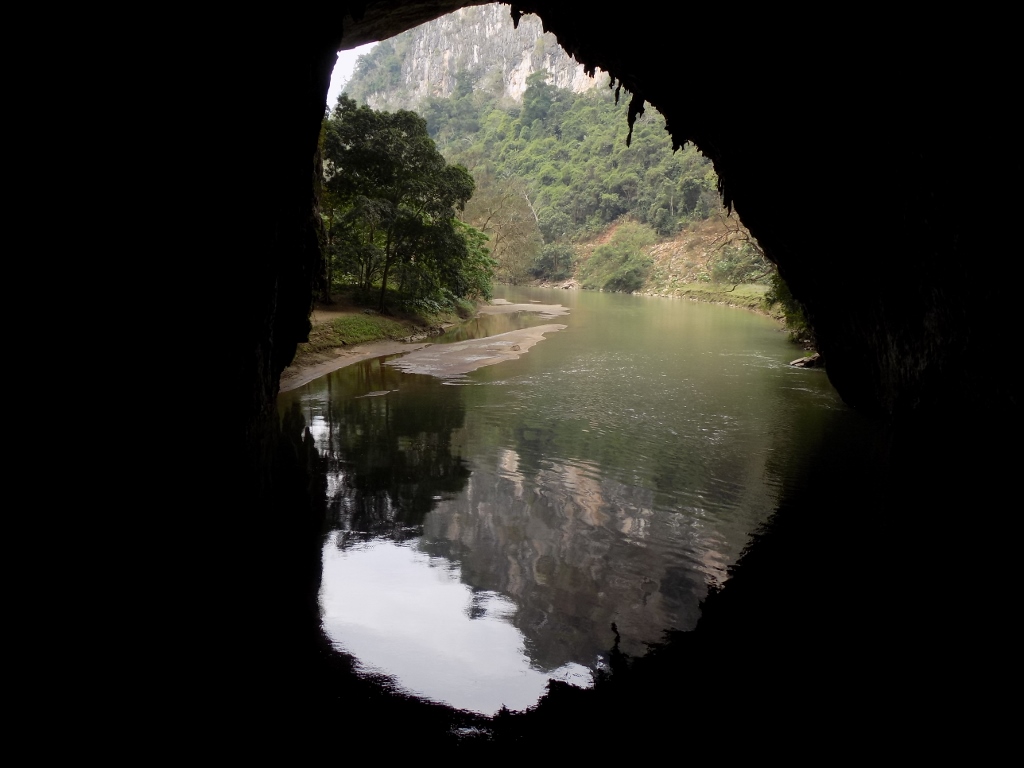 View at the entrance into the cave-tunnel from within
View at the entrance into the cave-tunnel from within
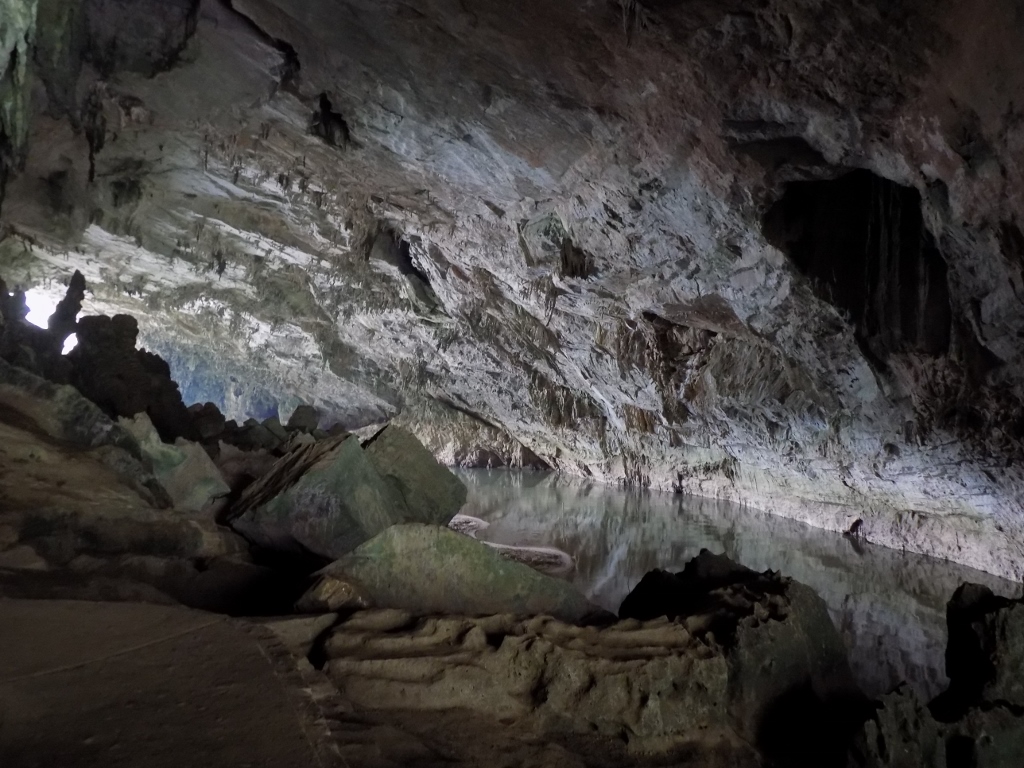 Đong Puong cave and the Song Nang river that flows through the cave
Đong Puong cave and the Song Nang river that flows through the cave
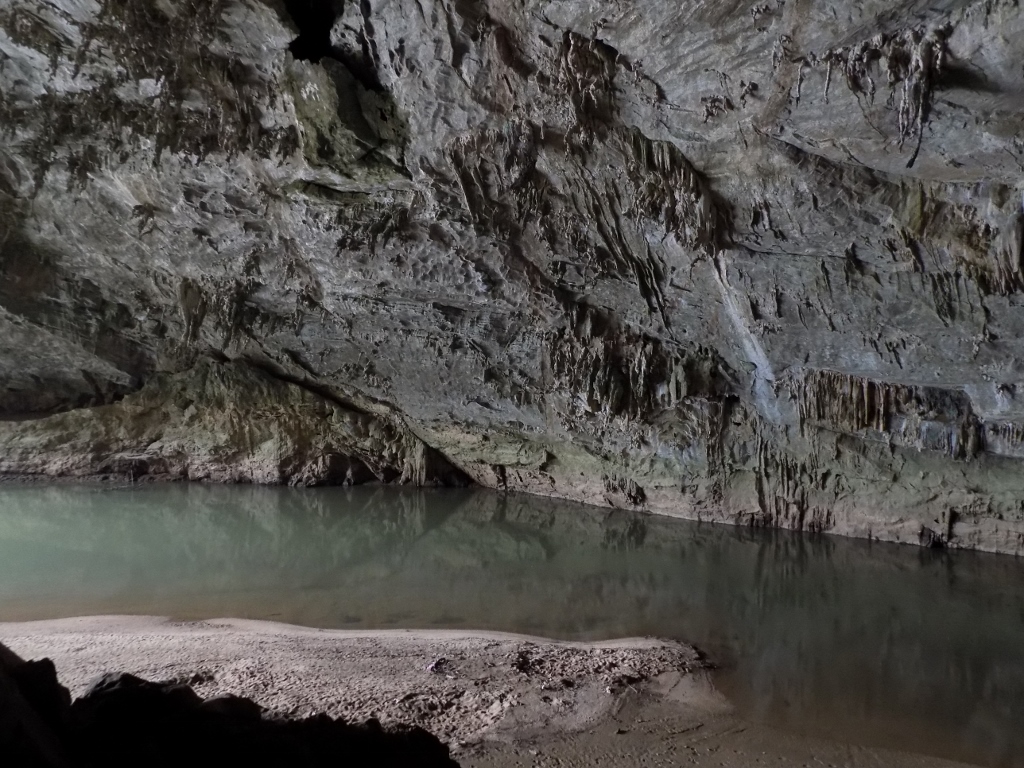 The Song Nang river that flows through the Đong Puong cave
The Song Nang river that flows through the Đong Puong cave
We walked to the end of the not-too-long a path admiring the fantastic cave formations and then we returned back to the boat the same way. In the meantime, some other tourists also came.
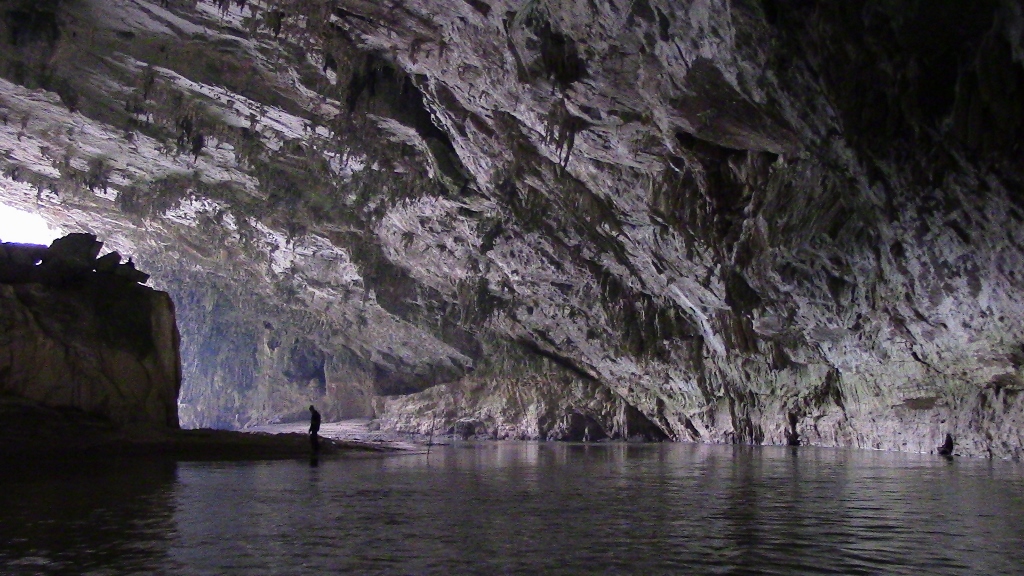 Sailing along the Song Nang river through the Đong Puong cave
Sailing along the Song Nang river through the Đong Puong cave
We sailed for a little bit more, then transferred into our mini-bus, soon made a break for lunch and it was already the time to head back to Hanoi. Still, the tour was not over yet and along the way we stopped at a small tea plantation since we were going through the areas where we could see numerous tea bushes.
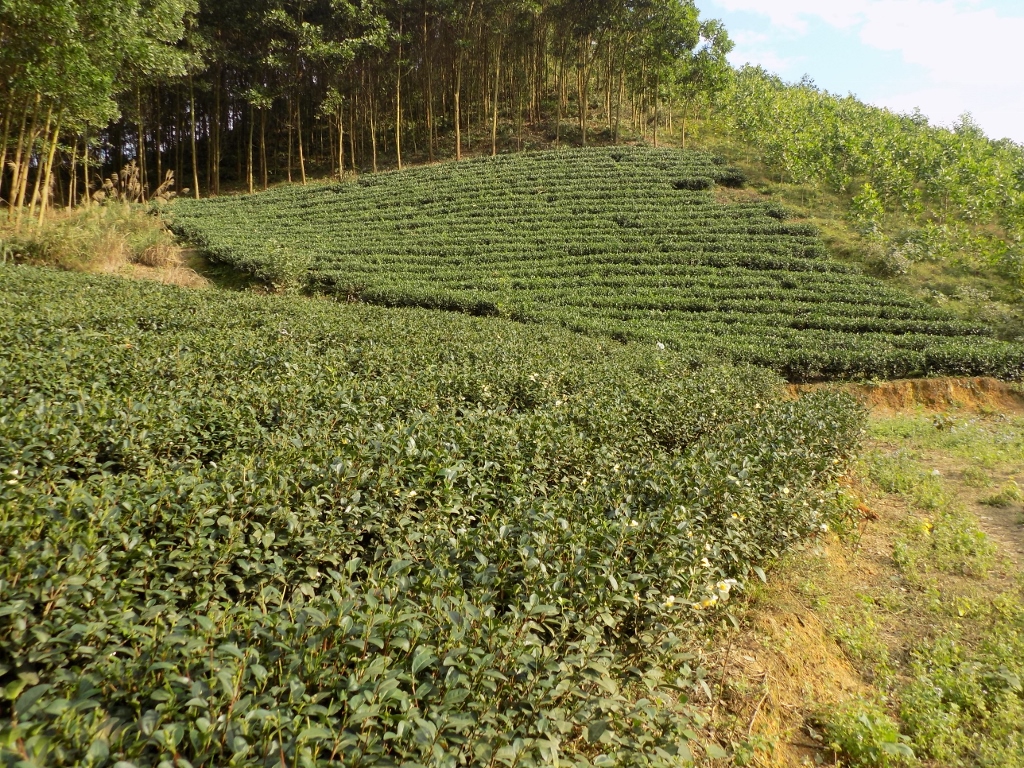 A small tea plantation on our way to Hanoi
A small tea plantation on our way to Hanoi
I have already mentioned that by the rule green tea is the tea of choice in Vietnam. Still, the owner of this tea plantation had already sold all of his stocks, so we stopped at some other place where Sneza could buy some green tea to take back home as a gift. In that rest area, however, we also came across a mini-bakery and it all smelled wonderfully of the freshly baked pastry, so we could not help ourselves and bought a small bun. This was by far the tastiest pastry of the brioche type I had every tried in my life. The softness, the lightness and the fantastic flavour of the pastry forced us to buy another piece and just as we were getting ready to enter the mini-bas, a freshest round of buns came and we felt compelled to go back and buy another one. They were all perfect.
Having returned to Hanoi, we sauntered around the centre for a while, but we also went to try one of the versions of coffee that may often be found in Vietnamese cafés. Namely, instead of some whipped cream, a densely beaten egg-yolk with condensed milk (and sugar) is put on top of coffee. We found it interesting, but not more than that.
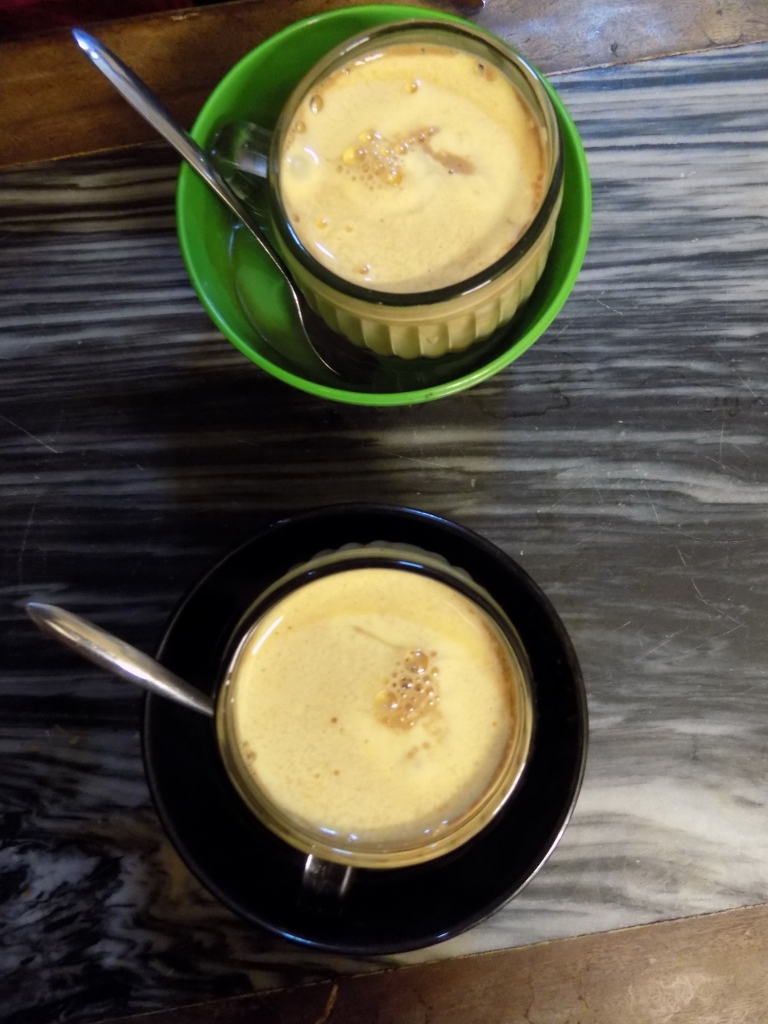 Vietnamese egg coffee
Vietnamese egg coffee